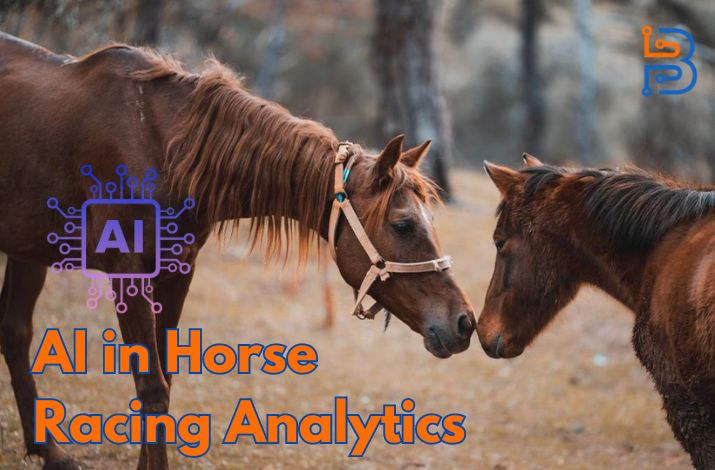Guide for Managing the Risks of Generative AI

In the 20th century, AI, aka Artificial Intelligence has turned a massive change in the existing world. This technology was only used in some tools like translating text, etc, but now, there are some models or subfields that have been developed to produce any type of content, like image, text, or audio. Yes, we are talking about one of the most advanced models called Generative AI.
This type of artificial intelligence model can benefit businesses, freelancers, and other content creators. For instance, there was a time when people had to create entire plans and strategies on their own, but now they can benefit from Generative AI. However, along with its pros, there are also some risks (cons) of such advanced technology.
Therefore, if you want to know how you can manage and deal with the risks of this AI technology, read this article! In this article, we will tell you about managing the risk of Generative AI to make your content creation process secure and easy.
Generative AI – Introduction
Generative AI is an artificial intelligence model that can generate new content that is similar to, or indistinguishable from, existing data. These models utilize complex algorithms and deep learning architectures to understand patterns and relationships in input data and then create new outputs that align with those patterns.
They make it easy for content creators to create innovative content that can engage a vast audience. Businesses are also free to use them to get helpful ideas to create strategic methods for better outcomes in terms of conversion rates and generating significant annual revenue.
Managing the Risks Associated With Generative AI
Managing the risks associated with generative AI is essential because risky AI can lead to an unhealthy framework. Here you will get some guiding tips that will prevent you from the risks of Generative AI:
Misinformation and Fake Content
Generative AI can be used to craft convincing fake content, including fake news, images and videos. This poses a noteworthy risk to public trust and may contribute to the spread of misinformation. Further, this will kill customers’ trust in a company which will harm its conversion rates and damage like this.
Copyright and Intellectual Property
Types of Generative AI models are trained on existing copyrighted content that might inadvertently produce outputs that overstep intellectual property rights. This may harm the most trusted copywriters and copywriting workers.
So, in that case, if you use such content or visuals, you might get a penalty for using someone’s else idea as your own. This may harm your reputation and career whether as an individual or a business.
Bias and Discrimination
If the training data for Generative AI contains biases, the model is able to produce outputs that memorialize those prejudices, leading to unfair or discriminatory content. These types of content are unsuitable for a website that publishes content to gain public trust and enhance its conversion rates.

Privacy Violations
There are chances that Generative AI might accidentally provide or leak some sensitive or private information about a company or an individual. As they are trained on the data available online, there might be chances of violating someone’s privacy. Which may cause a reduction in their trusting values and the company’s credibility.
Security Threats
There is a vast range available of Generative AI that may be utilized by malicious actors. Malicious actors are able potentially to use them to generate compelling phishing emails. In addition, they are also able to deepfake voice recordings for social engineering attacks to harm people’s trust.
Unintended Outputs
Sometimes, Generative AI models may produce unexpected or offensive content that can harm audiences’ sentiments. These types of content lead to unintended circumstances that are hard to control on time.
Managing The Generative AI Risks
To manage the risks associated with them effectively, you need to know some effective strategies or practices. Here you will get some of the best risk management strategies associated with Generative AI:
Quality Data
You should use high-quality and various training data to decrease the possibility of small-mindedness. In addition, make sure the model produces reliable and ethical outputs by analyzing them on a daily basis.
Bias Mitigation
Implement techniques to identify and mitigate biases in the training data to ensure that the generated content is fair and unbiased. This helps you to reduce the rate of biased content that may hurt customers’ sentiments.
Explainability
Choose those Generative AI models that showcase interpretability and explainability. This will enable you to understand how the model generates the content and identify potential issues.
Regular Updating
Continuously update Generative AI models to confirm they stay aligned with modern trends and benchmarks while improving overall performance.
Watermarking and Copyright
Integrate watermarks or other markers into the generated content to indicate that it was generated by an AI model. This solution is able to address potential copyright and intellectual property concerns.
Public Awareness
Educate the public about the existence of Generative AI and the possibility of encountering AI-generated content. This also can reduce the likelihood of misinformation and panic situations. This will also assist you in saving yourself from being misunderstood by the customers.
Ethical Guidelines
Establish ethical guidelines for the usage of generative AI within your organization. It defines acceptable use cases and potential boundaries to craft compelling content.
Legal Compliance
You should ensure that your use of Generative AI complies with relevant laws and regulations, especially in terms of privacy, copyright and content distribution.
Collaboration
Foster collaboration and knowledge-sharing within the AI community to collectively address risks and challenges associated with generative AI.
Summary
Generative AI has the potential to revolutionize creativity and innovation across various industries. However, as with any technology, it also has some threats, or, you can say, risks. By getting familiar with these risks and executing effective strategies to manage them, you will be able to harness the power of Generative AI while upholding ethical stan.
FAQs
Q1- Is generative AI risky?
Yes. Generative AI is risky to use because it can create fake news article, phishing attack emails, and more concerns.
Q2- How can I identify risks in the AI-generated content?
You can easily identify the risk by checking the provided information in the AI-generated content. If the information is incorrect then you may understand that the content is risky.
Q3- Can I prevent risk from AI-generated content?
The answer to this question is yes. You can prevent yourself form AI-generated content by implementing some ethical practices.






